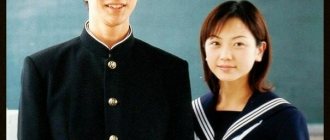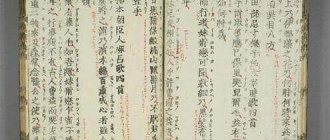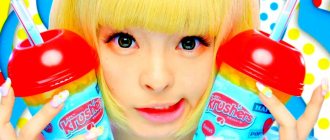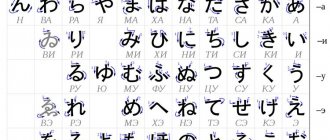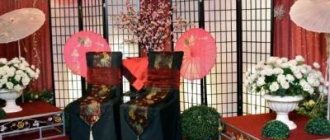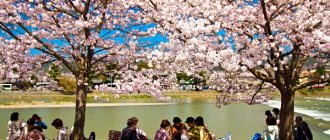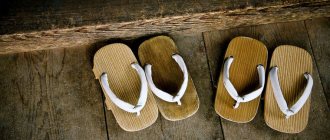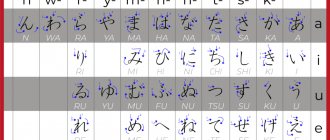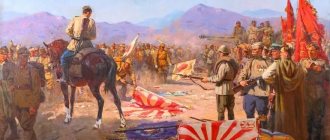Modern trends in Japanese fashion
For other aspects of clothing, see Japanese clothing.
Japanese street fashion
refers to different styles of modern contemporary clothing in Japan. Japanese street fashion, created from a combination of both local and foreign fashion brands, has its own unique style, some of which are considered extreme and avant-garde, similar to the high fashion styles seen on European catwalks.
Although many trends were extremely popular in the 1990s and early 2000s, many trends declined in popularity in the late 2000s and beyond; The rise and fall of many of these trends have been chronicled by Shoichi Aoki since 1997 in the fashion magazine Fruits
, a renowned magazine promoting street fashion in Japan. [1]
Content
- 1. History
- 2 Contemporary Japanese street fashion 2.1 Lolita
- 2.2 Gyaru
- 2.3 Ganguro
- 2.4 Kogal
- 2.5 Bōszoku
- 2.6 Decor
- 2.7 Visual kei
2.7.1
Oshare kei - 2.7.2 Angura Kay
Contemporary Japanese street fashion[edit]
Although styles have changed over the years, street fashion is still popular in Tokyo. Young people can often be found wearing subculture clothing in major urban fashion districts such as Harajuku (Ura-Harajuku), Aoyama, Ginza, Odaiba, Shinjuku and Shibuya.
Lolita [edit]
Sweet Lolita
Main article: Lolita fashion
Encompassing many different themes, Lolita has become one of the biggest and most recognizable styles in Japanese street fashion and has gained fans all over the world. Skirts or dresses are usually worn to the knees or below with petticoats for volume. Blouses or tops are trimmed with lace or ruffles in a Victorian or Rococo style. The length of socks or stockings can reach from ankle to thigh and can be covered with lace. Owners of this fashionable style often wear Mary Janes or boots. The most famous substyles in Lolita fashion:
- Gothic Lolita is Lolita with strong influences from Eastern and Victorian Gothic styles. Often characterized by dark colors and accessories adorned with motifs such as skeletons, bats, spiders and other popular gothic "icons" such as characters from Tim Burton films. Victorian iron gates and architectural patterns are also common in dress prints. Bonnets, rectangular headdresses and brooches are popular accessories for Gothic Lolita.
- Sweet Lolita is the most childish style, dominated by animals, fairy tale themes and innocent children's outfits. It was originally inspired by Victorian children's clothing and the kawaii
that is very common in Japan. Pastel colors are often used, although some dresses or skirts may also be darker or muted. Big head bows, cute purses and stuffed animals are popular accessories for Sweet Lolita. - Classic Lolita - The theme of this sub-style is more similar to the historical fashion of the Rococo or Victorian era. The colors used in this look are usually muted, giving this substyle a more mature look. Floral prints and solid colors are common, although fancier prints are not uncommon. Small bows, bonnets, rectangular headdresses and hair corsages are popular accessories for classic Lolita.
- Punk Lolita is an experimental style that combines the influences of punk and lolita. It can sometimes look deconstructed or crazy while still maintaining much of the "Lolita silhouette".
- Kodona, also known as masculine style and uji, is a more masculine counterpart to lolita, influenced by Victorian boys' clothing. "Prince pants", which are short capri-style trousers that are cut off at the knees, usually with some kind of detailing (such as lace edges at the cuffs), are typically worn with men's blouses, top hats, knee socks, etc. [4]
Gyaru[edit]
Gyaru being photographed in Ikebukuro in 2009
Main article: Gyaru
Gyaru (sometimes known as ganguro, actually a subcategory of gyaru) is a type of Japanese street fashion that originated in the 1970s. Gyaru focuses on a girly glam style, focusing on artificial beauty (wigs, false eyelashes, false nails, etc.). Gyaru is also heavily inspired by Western fashion.
Ganguro[edit]
Two ganguro
in Tokyo, April 2008
Main article: Ganguro
The ganguro style in Japanese street fashion became popular among Japanese girls in the early 1990s and reached its peak in the early 2000s. Ganguro falls within the larger gyaru fashion subculture. Ganguro usually includes colorful outfits, miniskirts and tie-dyed sarongs. Ganguro style means bleached hair, deep tan, false eyelashes, black and white eyeliner, bracelets, earrings, rings, necklaces and platform shoes.
Many people consider Namie Amuro to be the leading figure of the ganguro style. It was after her appearance in public with tanned skin and dyed hair that many Japanese girls began to follow her example. The terms "Yamanba" and "Manba" refer to extreme expressions of the ganguro style.
However, enthusiasts of the Yamanba and Manba styles consider ganguro to be a "simple version" of their style. Currently, the name "Yamanba" has been shortened to "Manba". [5]
Kogal [edit]
Kogyaru is identified by her losing her socks and shortening her skirt
Main article: Kogal
The kogyar (kogyaru) appearance is based on the high school uniform, but with a shorter skirt, loose socks, and often dyed hair and a scarf as well. Members of the Kogyar style sometimes call themselves Gyaru (girls). This style was prominent in the 1990s but has since declined.
Bosozoku[edit]
Japanese cosplayers dress up in bōsōzoku style outfits
Main article: Bōsōzoku
Although asozoku fashion has fallen out of favor since the 1990s, the stereotypical image of asozoku is often depicted and even caricatured in many forms of Japanese media such as anime, manga and films. A typical bōsōzoku member is often depicted wearing a uniform consisting of overalls similar to those worn by laborers, or tokko-fuku
(特攻服), a type of military jacket with kanji inscriptions. They are usually worn with the hems undone, with no shirt underneath, revealing bandaged torsos and matching baggy pants tucked into high boots.
Decora [edit]
The Decora style originated in the late 1990s and early 2000s and has gained great popularity both in Japan and abroad. An example is singer Kyary Pamyu Pamyu, who became famous in the Harajuku fashion scene before her musical debut. Wearers usually stick to a color palette for their decor; former. Pink decor, red decor, dark decor and rainbow decor. A simple shirt and hoodie were often worn with short tutu-like skirts. The hair (often pulled back into a low ponytail with long bangs) and the makeup itself are usually quite simple. However, the most important part of the decor is layering many cute accessories so that the bangs and front hair are barely visible. Stockings, leg warmers, leg warmers and knee socks are also worn on top of each other in different layers. Common details also include leopard prints and patterned dental masks. The style has since declined in popularity, but still has a large following around the world.
Visual kei [edit]
Main article: Visual kei
Visual kei group Versailles
Visual kei is a style created in the mid-1980s by Japanese musicians, consisting of intense makeup, unusual hairstyles, and colorful costumes, similar to Western glam rock and glam metal. Androgyny is also a popular style aspect. Some of the style's most famous and influential artists include X Japan, Luna Sea, Versailles, The Gazette, Mejibray, Roiz, L'Arc En Ciel, An Cafe, Malice Mizer and Diaura.
Oshare kei [edit]
Oshare kei is the opposite side of visual kei with bright colors and lots of pop influences. However, groups working in this style live up to their meaning by dressing in colorful costumes or in Decora or Pop Kei styles. So, many of them show off lots of jewelry and bags with cartoon characters and animals on them, lots of colorful hair clips and lighter makeup. The music sounds more fun, the lyrics are lighter and more fun. Groups include An Cafe, Panic Channel, Ichigo69, Lolita23q, SuG, Delacroix, LM.C and Aicle. [6]
Angura Kay [edit]
Angura kei is a dark Japanese fashion that is often associated with the visual kei subgenre. The term comes from the Japanese pronunciation " underground"
, which refers to its origins in underground theater. The clothing is generally heavily influenced by traditional Japanese elements as well as the Showa era (1926–1989), but with a gothic twist. The makeup usually consists of shironuri and is dark and heavy. Although the kimono is most often used by visual kei artists, modified Japanese school uniforms are also often used in this style. Motifs and accessories are dedicated to post-war Japan and the occult.
Cult party kei [edit]
Cult party kei, named after the Harajuku Cult Party
(now known as
the Virgin Mary
), is a relatively recently created style based on Western religious artifacts such as crosses or Bibles. Common aspects include crosses woven into yarn, layers of fabric in soft colors, lots of cream lace, satin bows and biblical prints. The makeup and hairstyle are not as over the top as other styles. Cult party kei is often worn with natural eye makeup and simple rose hairstyles. Some believe that the iconic kei is a variation of the dolly kei.
Dolly Kay [edit]
Dolly kei is a style based on Japanese views of the Middle Ages and European fairy tales, especially the Brothers Grimm and Hans Christian Andersen. It includes a lot of vintage style clothing and sometimes has religious symbols. Grimoire
is a store in Japan that has been described as "the pioneer store behind the Dolly-kei fashion scene". [7]
Fairy kei [edit]
Fairy kei is a children's style based on 1980s fashion. The outfits consist of pastel colors (such as lavender, light blue, light pink, mint green, pale yellow, etc.), angels, toys, and generally cute motifs, elements, and accessories from Western toy lines 1980s and early 1990s, such as Polly Pocket, My Little Pony, Strawberry Shortcake, Rainbow Brite, Popples, Lady Lovely Locks, Barbie, Wuzzles and Care Bears. Pastel colored hair is common, although natural hair is also popular, hairstyles are usually simple and decorated with something cute or pastel; Bows are a common theme. The term "fairy" comes from Zipper magazine (despite popular belief that it was created by Sayuri Tabuchi, owner of the Tokyo fashion store Spank!
She was an accidental creator of the style). [8]
Mori kei [edit]
Mori (meaning forest) fashion uses soft, loose-fitting layers of clothing such as shift dresses and cardigans. It focuses on natural fabrics (cotton, linen, wool), as well as handmade or vintage accessories with a nature theme. The color scheme is usually light and neutral, but patterns such as plaid or florals can also be used. When it comes to hairstyles, bangs (often curled) and braids are very popular. The style is similar to dolly kei in that the goal is to create a doll-like look, but in a more casual, earthy manner. [9]
Peeping [edit]
"Peeps" is a 90s-inspired sporty goth style popularized in the Harajuku underground by online magazine PEEPS. It was recognized as one of the top trends for 2020 in Japanese women's magazine Mery's annual trend forecast. [10]
Kimono style[edit]
Despite the widespread use of Western clothing in Japan, Japanese fashion is still influenced by traditional clothing, and people still wear kimonos in everyday life, although most people only wear them to weddings, graduations, and other formal events.
Even though the number of people wearing kimono as casual wear has decreased significantly, the younger generation in Japan still mixes kimono and modern style in fashion, wearing modern shoes and accessories instead of the usual geta and kanzashi that are usually worn. There are even contemporary designers who have used the kimono as inspiration, such as the TANZEN collection by designer Issey Miyake.
Visual Kei
This style involves a synthesis of punk, emo and gothic, albeit in Japanese execution. Its appearance is a consequence of the influence of national rock music.
Fans of this style want to surprise and stand out from the rest. This style involves the use of a large number of uniform elements, terrifying masks, dark makeup and unusual hairstyles. Also characteristic are piercings and tattoos.
The colors are combined in different ways, but the main ones are red, black and white. Accessories should be unusual, preferably made of metal.
This style is also often combined with a fantastic version of the Victorian era fashion trend called steampunk. This means adding corsets, top hats, old-fashioned elements such as monocles, etc. to the look.
Fashion industry and popular brands [edit]
Comme des Garçons clothing on display at the Metropolitan Museum of Art
Although Japanese street fashion is known for its mix of different styles and genres, and there is no single popular brand that can consistently appeal to all fashion groups, the huge demand created by the fashionable population is fueled and supported by a vibrant fashion industry Japan. Issey Miyake, Yohji Yamamoto and Comme des Garçons are often cited as the three cornerstone brands of Japanese fashion. Together they were particularly recognized as a Japanese fashion force in the early 1980s for their heavy use of monochrome colors and cutting-edge designs.
Back in the 1950s, there were several brands specifically focused on street fashion, such as Onitsuka Tiger (now known as ASICS).
Japan is also known for its significant consumption of foreign luxury brands. As of 2006, Japan consumed 41 percent of all luxury goods in the world. [11] Burberry's blue line is one of the most successful in this arena.
Sukeban
This is a style that has also experienced the peak of its popularity. His fans are strong and independent Japanese women. Previously, the term "sukeban" referred to female gangs that attacked and robbed people.
Several directions can be distinguished here. In the first case, the upper part of the outfit should correspond to the sailor's uniform, while a pleated skirt is worn below. The next use option is a combination of short shorts, studded leather jackets and large platform boots.
International influence[edit]
Japanese street fashion influences the West Coast of the United States. [12] High-end fashion brands such as Comme des Garçons have played a large role in the global industry since the 1980s, especially through frequent crossovers of guest design with other brands. In 2008, Rei Kawakubo designed for Louis Vuitton [13] and H&M. [14]
Tomoko Yamanaka's work was presented at London Fashion Week 2010. [15]
Harajuku Fashion was ranked 5th in Google's fashion search of the year in 2021. [16]
Nagomu Gal
Nagomu is an indie label founded in 1983 that has a strong following in Japan. This is where the name of the style came from - Nagomu Gal, which first appeared in the Takarajima magazine.
Naked Gal involves wearing vintage clothing. Representatives of the subculture often wore long-sleeved T-shirts, thick-soled shoes and knee socks. The term “Nagomu Gal” did not always have a positive connotation; on the contrary, its fans were associated with annoying fans. In 1989, the Nagomu label ceased to exist.
Social motives[edit]
The social motivations driving interaction and participation in personal fashion choices and broader fashion movements in Japan are complex.
Firstly, Japanese youth have quite a lot of disposable income; Many argue that this has historically been possible because Japanese youth have largely lived at home with their parents for much longer than in other countries, reducing living expenses and thus making large expenditures on clothing possible. [17]
Additionally, the emergence of a strong youth culture in the 1960s and 1970s, which continues today (especially in the Harajuku area), greatly contributes to the development of new styles, looks, and fashion subcultures. Rising consumption, which played a major role in Japan's "national character" during the economic boom of the 1980s, continues to influence fashion purchases even after the economic bubble burst in the 1990s. These factors lead to a rapid turnover and variety of styles popular at any given time. [18]
Ganguro
The peak of popularity of this style occurred in the nineties. But now sometimes you can meet his fans on the streets of Tokyo. It is preferred by middle-aged women who want to remember their turbulent youth and give themselves an unusual, even exotic appearance. Adherents of ganguro love tanning very much, so much so that after procedures in the solarium they apply foundation of an even darker shade to their faces.
Links[edit]
- "Fruit: the pop fashion of the future". Stunned. 2016-01-12. Retrieved July 28, 2021.
- Takatsuki, Yo (December 17, 2003). "Japan is growing its own hip-hop". BBC News
. - Condrey, Ian. Hip-hop Japan: rap and the paths of cultural globalization. Durham, NC: Duke University Press, 2006.
- "Codona". Archived from the original on 2012-03-17.
- DIGIMBAYEVA, Anelia (August 3, 2018). "Japanese street fashion". STREETMAN. Retrieved April 9, 2021.
- "Oshare Kay". JaME-World.com.
- "The Shibuya Grimoire - Japanese Dolly-kei and the Wonderland of Vintage Fashion". Tokyofashion.com. 2010-03-13. Retrieved December 11, 2011.
- McInnes, Paul. "Spank!" - Japanese pop disco of the 80s “Fashion in Tokyo”. tokyofashion.com
. tokyofashion.com. Retrieved March 28, 2012. - SHOJI, KAORI (February 8, 2010). "The Cult of the Living Doll in Tokyo". New York Times
. Retrieved March 30, 2012. - “Harajuku Pop - 今話題のピープス女子って何?! "
- Japanese Foreign Trade Organization | Japan is the most concentrated source of revenue for luxury brands in the world. Archived March 2, 2009, at the Wayback Machine.
- https://liftmeupwardrobe.co.uk/2013/07/19/fashion-sensei/
- https://www.style.com/stylefile/2008/08/rei-kawakubo-puts-her-stamp-on-louis-vuitton/
- https://www.vogue.co.uk/news/2008/04/03/comme-des-garcons-for-handm
- "Designer Profile: The Cabinet of Tomoko Yamanaka". London Fashion Week. 2011-09-21. Retrieved December 11, 2011.
- [https://https://trends.google.com/trends/yis/2019/US/ “Harajuku Fashion Ranked #5 in Google Search Fashion of the Year in 2021”] Check Value (Help). January 4, 2021. Retrieved January 14, 2021.|url=
- Letter from Tokyo: Trade riot - what children want
- Godoy, Tiffany (December 2007). Vardanyan, Ivan (ed.). Style Deficit Disorder: Street Fashion of Harajuku, Tokyo
. San Francisco: Chronicle Books LLC. ISBN 9780811857963. Retrieved March 14, 2021. PDF on kingdom-visions.com, readable online with a free account
